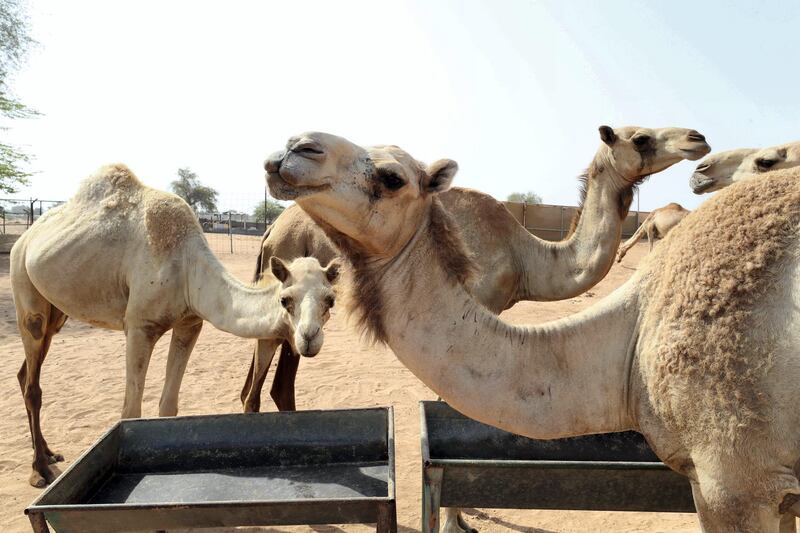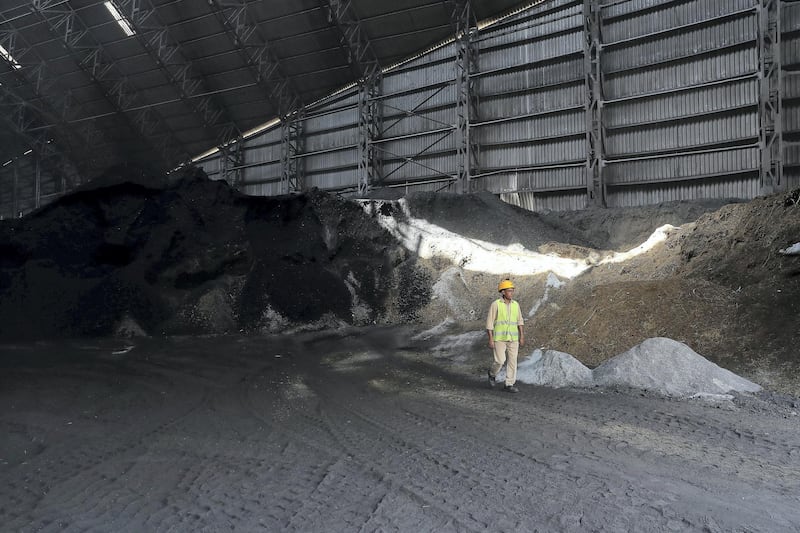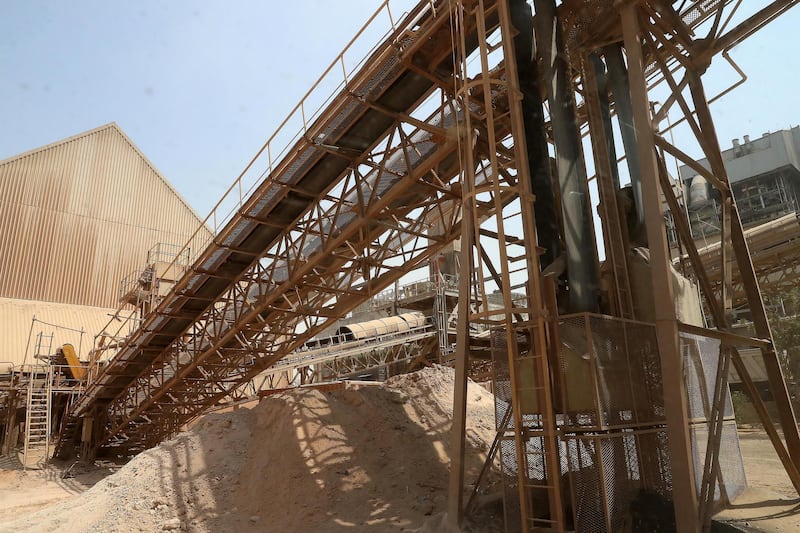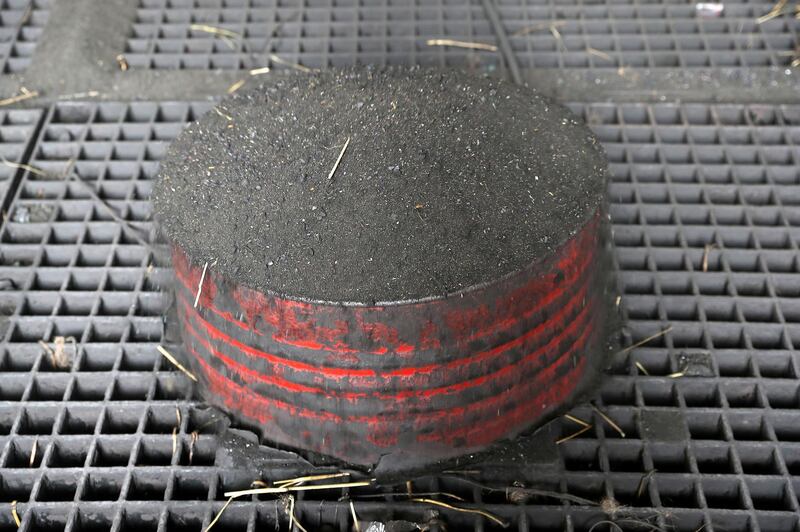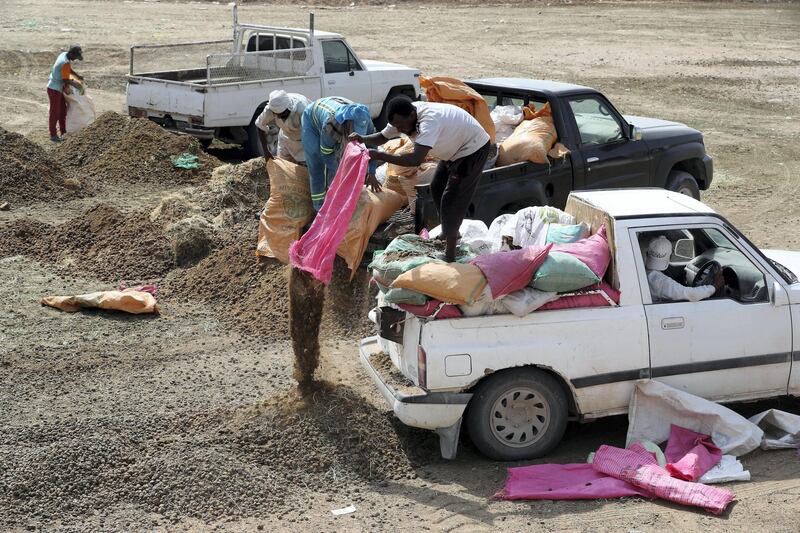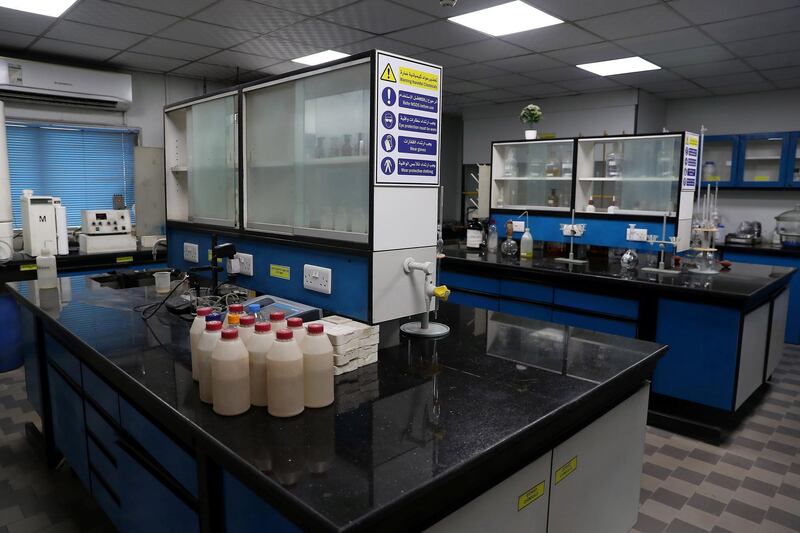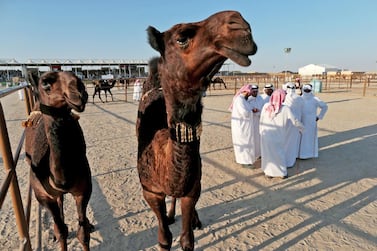On a good day, Mlah the camel produces 10 kilogrammes of manure.
This makes her an essential contributor to the UAE’s burgeoning circular economy.
In Ras Al Khaimah, the government has tied two of its biggest industries in an unlikely partnership to cut carbon emissions. Every day, more than 50 tonnes of camel manure are used as fuel in cement production.
“When we started to make an estimate, people wouldn’t believe me,” said Sonia Nasser, the executive director of the waste management agency at the RAK Public Works and Services Department. “But the first thing in creating a circular economy is, what do I have that I’m throwing away?”
The central premise of the circular economy is to minimise waste and make the most of resources.
Ras Al Khaimah had camel waste - and lots of it.
The emirate is home to roughly 9,000 camels and each produces about eight to 10 kilogrammes a day.
Instead of dumping it, the government began a programme last May to process it and give it to local cement factories as fuel.
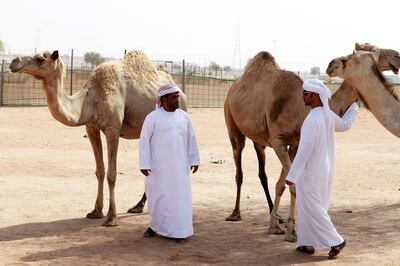
The camel population has grown exponentially since the rise of the camel racing industry. Camels produce far more waste than farmers use to fertilise palm orchards. The excess manure was going to the landfill. When Ms Nasser suggested the programme, camel farmers were immediately supportive.
“If the government says it is a good idea and keeps things clean, then it is a good idea,” said Mlah’s owner, Saeed Al Masafari.
For cement companies, it cut costs and carbon emissions. But it took some convincing.
“When we approached people 10 years ago with alternative fuels, nobody wanted to touch it because people are very protective of the [cement production] process and the quality,” said Ms Nasser. “You really have to have a process engineer who is open minded.”
The project began in May 2018, and more than 10,000 tonnes from 6,000 camels have been diverted so far this year.

Farmers bring manure to four collection stations where it bakes in the sun. From there, the manure is taken north to Gulf Cement Company in the town of Khor Khair.
This has saved an estimated 18,000 tonnes of carbon emissions, and cut costs.
To make cement, ovens must burn at 1,400 degrees, 24 hours a day. More than 70 per cent of Gulf Cement’s production costs are heat and power. With so much energy required, cement production is one of the country’s main contributors to carbon emission.
Dried camel manure has about half the calorific value of coal, so a tonne of camel manure replaces half a tonne of coal.
“When we were introduced it had a good calorific value but the question was, how to use it and where to use it?” said Tiruneveli Palanikumar, the head of Gulf Cement’s business development.
After some experimentation, they found they it worked best mixed with coal as boiler fuel. About 8 to 10 per cent of coal is substituted with camel waste.
“Cement production is a natural incinerator,” said Mr Palanikumar. “Most of the waste we can burn. I need about 1,500 metric tonnes of fossil fuel every day. When I’m using so much fuel, 10 per cent is not a big issue.”
Similar programmes could be applied to other animals. After all, Ras Al Khaimah has more livestock than people. In addition to its camels, there are more than 317,000 goats, 81,000 sheep and 5,000 cattle.
Following the success of Gulf Cement, other cement factories want to use camel fuel and RAK hopes to expand the manure fuel project to other Emirates. There are 14 cement plants in the UAE and six are in Ras Al Khaimah. About 13,000 tonnes of coal is burned in the Northern Emirates every day.
“If you can stop using this amount of coal, there’s a whole carbon emissions trial that we’re reducing,” said Ms Nasser. “Coal is coming and being shipped all the way from South Africa to Ras al Khaimah.”
Other waste like clothing, agricultural waste and dry sludge could be alternative fuels.
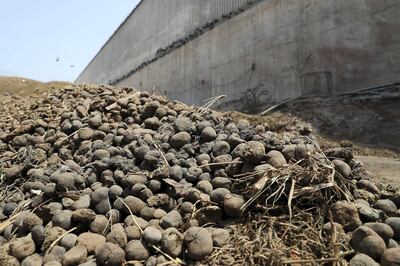
Some cement factories are already substituting coal with carbon dust, a byproduct from the aluminum industry and Star Cement substitutes 10 per cent of its fuel with tyre chips.
“When people have strange materials, we call the cement factories,” said Ms Nasser. “Does it have calorific value? Instead of trying to landfill it, can we incinerate it? There’s a lot you can get rid of.”
It is part of the Ministry of Climate Change and Environment strategy to develop a circular economy and turn waste into a resource.
By 2020, all coal-burning cement factories must use local municipal, commercial and industrial waste for at least 10 per cent of total energy needs.
